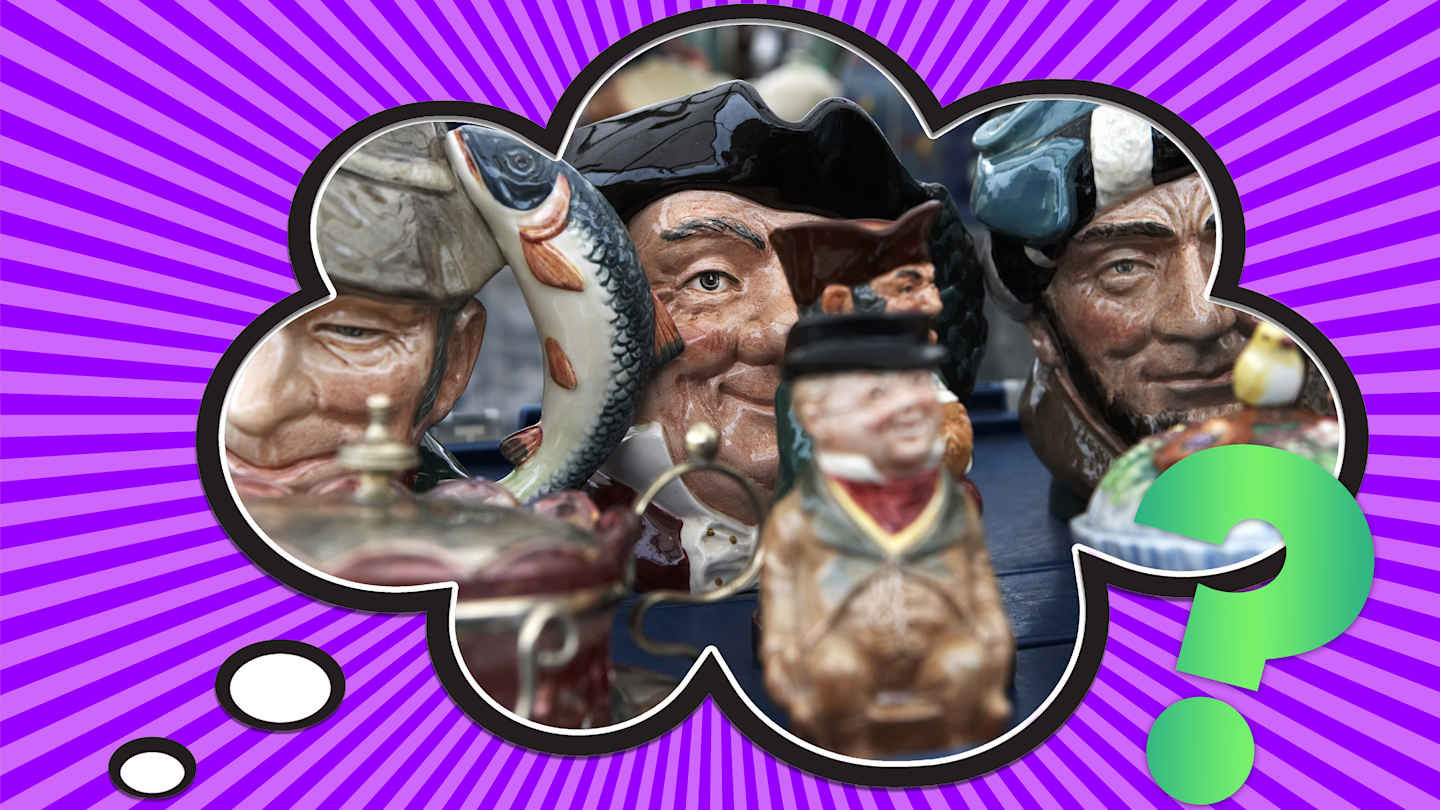We often use the word “mug” To Casually Refer To Someone’s face. It’s a common slang term that might even elicit a chuckle from someone unfamiliar with its origins. But have you ever stopped to wonder where this curious linguistic quirk came from? The story of “mug” as slang for “face” takes us on a fascinating journey through 18th-century Britain, uncovering the influence of pottery and Cultural Trends.
This seemingly simple word transformation has roots in the whimsical world of Toby jugs. These ceramic pitchers, shaped like jolly men with distinct features, were all the rage during the 18th century. Often adorned with accessories like tricorn hats, pipes, and even a mug of ale, these jugs captured the essence of larger-than-life characters like Sir Toby Belch or Henry Elwes, known for their boisterous drinking habits and immortalized in literature and song.
As time went on, potters began to focus solely on the faces of these figurines, sometimes exaggerating features for comedic effect. This naturally led to an association between “mug” – referring to the pitcher – and a caricatured representation of a face. Furthermore, the practice of taking photographs of suspects, Known As Mug Shots, solidified the connection between “mug” and “face” in popular culture.
Toby Jugs: A Visual History
Toby Jugs, those charming ceramic pitchers with jovial faces, were more than just decorative items; they represented a cultural phenomenon in 18th-century Britain. These figurines captured the essence of the time, often depicting figures associated with merriment and revelry, like famous playwrights or historical figures known for their fondness for ale.
The jugs typically featured exaggerated features, Wide Smiles, Rosy Cheeks, and prominent noses, Adding To Their Whimsical Charm. The inclusion of accessories, Such As Tricorn Hats, pipes, and tankards of ale, further enhanced their character and contributed to the overall narrative. They served as both functional objects and decorative pieces, gracing homes and pubs alike.
Interestingly, Toby jugs were often named after specific individuals or characters, adding another layer of personalization to These Already Unique Creations. Their popularity spread beyond England’s shores, reaching other parts of Europe and even across The Atlantic Ocean, solidifying their place as a beloved symbol of British culture during that era.
The Evolution of Mug Molds
As the popularity of Toby jugs soared, potters began to experiment with different molds and designs. Initially, these mugs were mostly simple representations of the head and shoulders, capturing the essence of the character’s Jovial Expression. But as demand grew, so did the complexity and detail of the molds.
Potters refined their techniques, Adding Intricate Elements Like Hairlines, wrinkles, and even beards to create more lifelike and expressive faces. Some molds incorporated accessories like hats, pipes, or tankards, further enhancing the personality of each Individual Jug. These advancements in molding technology allowed for greater variety and customization, catering to diverse tastes and preferences.
This evolution of mug molds reflects the changing cultural landscape. The desire for more personalized and Detailed Objects Became Increasingly Prevalent, influencing not only pottery but also other artistic forms of the time. This transition highlights how popular trends can drive innovation and creative expression Within Specific Crafts.
 Funny Town Names: Weirdest US State & City Names
Funny Town Names: Weirdest US State & City NamesCaricature and the Rise of “Mug”
The exaggerated features often found on Toby jugs contributed to the association between “mug” and caricatured facial representations. These playful distortions of human features became increasingly popular during this period, appearing not only in pottery but also in paintings, prints, and even satirical cartoons.
This trend reflected a growing fascination with visual humor and a willingness to poke fun at societal norms and individual quirks. The exaggerated noses, Wide Grins, and comically plump cheeks on Toby jugs resonated with audiences who found amusement in these over-the-Top Depictions. This playful connection between “mug” as a physical object and its representation of a face paved the way for the linguistic shift we See Today.
As cartoony illustrations became more prevalent in everyday life, the term “mug” began to be used more broadly to refer to a person’s face, particularly when describing someone with distinctive or memorable features. This association solidified over time, eventually becoming the common slang term we know and use today.
Photographs And Legal Association
The rise of photography in the 19th century further cemented the link between “mug” and face. Police departments began using photographs to Identify Criminals, leading to the creation of those now-familiar “Mug Shots.” These standardized portraits captured a person’s face with clinical precision, emphasizing its importance for identification purposes.
The term “mug shot” Quickly Entered Common Parlance, becoming synonymous with a photographic record of someone’s face, often associated with legal proceedings or investigations. This association solidified the connection between “mug” and face in a more formal and official context. The public became accustomed to using “mug” as shorthand for a person’s face, particularly when dealing with legal matters.
This legal context further reinforced the Linguistic Shift, making the use of “mug” as slang for face even more prevalent in everyday conversation. From its playful origins in Toby jugs to its official role in Criminal Justice, the word “mug” underwent a fascinating transformation, becoming a ubiquitous term for facial features.
Faces in Print
Beyond the realm of pottery and Law Enforcement, the association between “mug” and face found its way into the world of print media. Newspapers and magazines often used “mug” to describe photographs of individuals alongside news articles or feature stories. This practice became increasingly common as Photography Integrated Itself Into Journalism, providing visual context and enhancing the storytelling experience for readers.
The use of “mug” in this context further normalized its association with facial representation in everyday language. People became accustomed to encountering this term in various publications, solidifying its place in the lexicon of modern English. This widespread adoption across different platforms demonstrates how cultural trends can rapidly influence language and its usage across Diverse Domains.
The emergence of “mug” as a common descriptor for faces in print media reflects a broader shift towards visual communication during that period. As photography gained prominence, so did the need for concise and readily understandable language to accompany These Images, ultimately contributing to the widespread acceptance of “mug” as slang for face.
More for curious minds
Unlock extra content and exclusive deals tailored to your interests.










